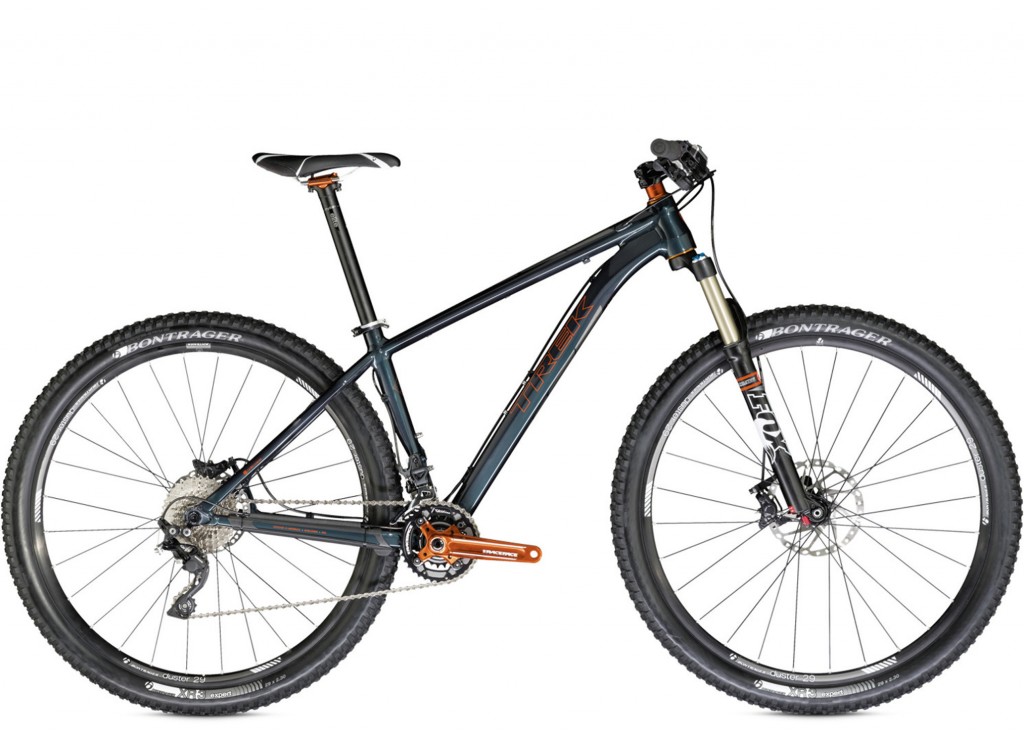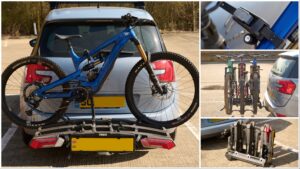This quintessential trail hardtail just needs a few geometry tweaks to attain its potential
Trek Stache 8 review
First introduced last season, the Stache is billed as a trail-ready 29er hardtail designed to meet all the exacting demands of the modern mountain biker.
The frame shares most design features you find on Trek’s full-suspension trail bikes, including a tapered head tube, ISCG tabs on the BB for fitting a chain device and 142x12mm rear dropouts; the last of those isn’t commonly found on a hardtail — all of the other bikes on test this month have regular QR rear dropouts.
Keeping the chainstay length in check was a priority for Trek when developing the Stache and, by switching to the stiffer bolt-through dropout design, the engineers have been able to retain the desired frame stiffness for tracking and power delivery while ditching the seat and chainstay bridges. This, in turn, has allowed the rear wheel to be tucked in nice and tight to the BB without scrimping on tyre clearance. The final piece of the puzzle was to flatten the back of the seat tube to make everything fit together.
Was it worth all the hassle? Well, it certainly looks amazing and the 442mm chainstays, while not being super-short, are shorter than on most 29ers. There is one downside to the flattened seat tube design, though: you can’t drop the saddle more than an inch or two. So your first upgrade will definitely be a dropper post, and Trek provides Stealth routing to make it possible if that’s the way you want to go.
Suspension
It’s not just the frame design that’s unique on the Trek; it’s the only bike on test to sport a Fox fork. There was a time when the 120mm-travel 32 Float would have been a sign of excellence, but since the introduction of the CTD damper in 2012, Fox forks no longer carry the same cachet.
Yes, the oversized 15mm quick-release and 32mm upper tubes ensure that it’s plenty stiff enough for good steering precision, even with 29in wheels, but there is a harshness to the action of the Fox fork that translates to a slight numbing of the hands. The entry-level Evolution series also has a distinct lack of mid-stroke support, and while this makes it very easy to achieve full travel on every ride, it does nothing for your ride confidence when the fork plummets through all of its travel when landing a drop or having to negotiate a tight, steep switchback.
Components
One of the key advantages of 650b wheels is that with like-for-like components they will be lighter than their 29in counterparts. Well, that isn’t the case here. With alloy nipples, a nice, wide, lightweight rim and quality sealed bearing hubs, the Bontrager tubeless-ready 29er wheels are easily the lightest on test, making the Stache incredibly fast from the gun and easy to get lent over in corners. In action, the Shimano gears never missed a beat and while the ServoWave action of the SLX levers doesn’t match the light touch of Avid brakes, there’s no disputing their prodigious stopping power and reliability.
Performance
Once we got the seatpost chopped down so we could drop the saddle a touch, our attention quickly turned to the 90mm stem. For a ‘trail-ready’ bike it’s simply too long, even if the reach was actually OK. Swapping to 70mm made a massive difference, but there’s no getting around the fact that the Trek Stache has the sharpest steering and most traditional XC handling of the four bikes in this test.
Overall, it’s a rosy picture for the Stache which ticked nearly all the boxes. While the lightweight 29er wheels and quality frame construction made it one of the fastest and most enjoyable bikes to ride on the Blue runs at Bike Park Wales, Trek has been a little too conservative to meet the needs of the modern trail rider. With a little bit of tweaking to the standard steering geometry and a better fork, the Trek Stache 8 could so easily be our test winner.
>>> Click here to find out more about geometry with our handy guide
This test appeared in the January 2014 issue of MBR, alongside the Saracen Zen, Orange Clockwork Pro and Whyte 905.
Verdict
Nothing would boost the Clockwork’s trail credentials more than a 750mm handlebar, which riders could then chop down to their preferred width. With that out of the way, the Orange Clockwork Pro is a bike that’s brimming with potential — the build kit is solid, the frame proportions are great, and so is the handling at speed. All Orange needs to do now is increase the tyre clearance on the rear so you can fit fatter tyres and drop the BB height a touch. If they could do that, we’d love to have another ride of what could be an amazing 29er trail bike.
















